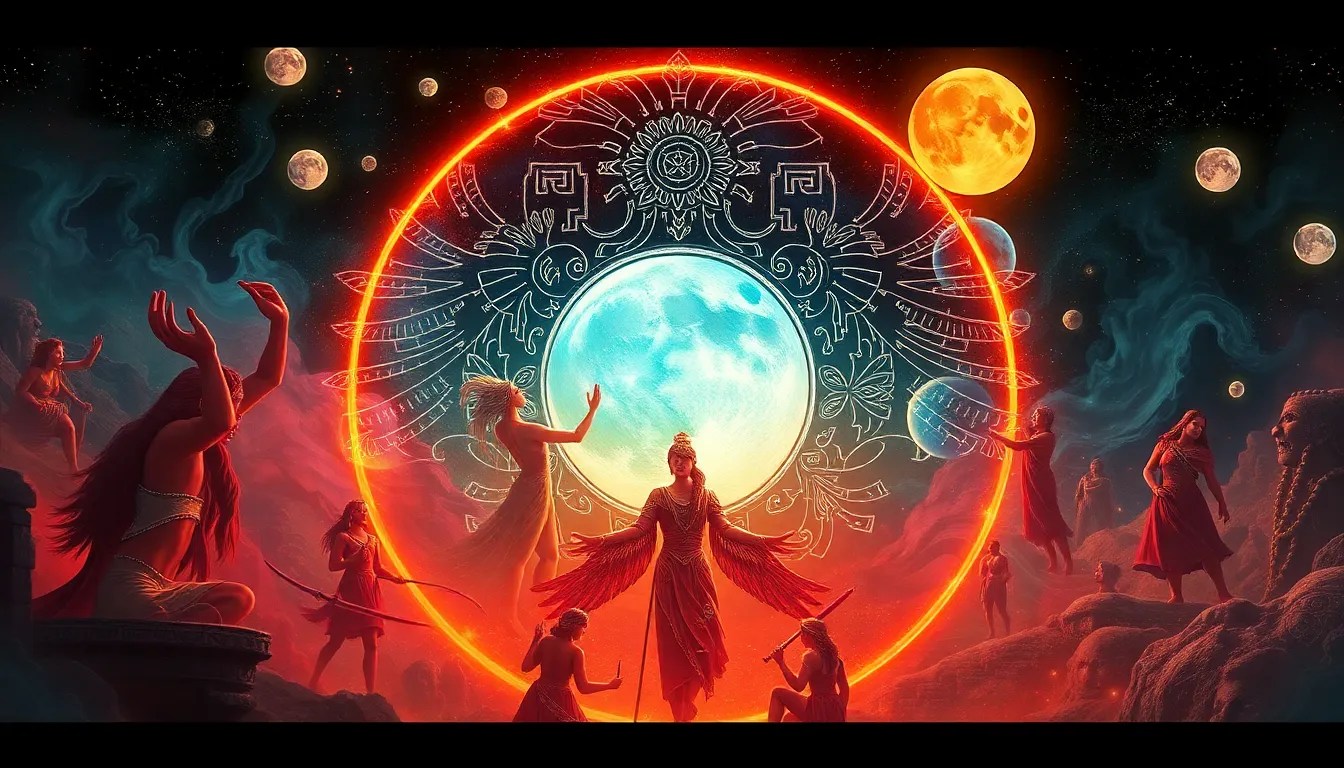Mayan Lunar Myths: Tales of Transformation and Divine Femininity
I. Introduction
Mayan mythology encompasses a rich tapestry of stories, beliefs, and rituals that illustrate the worldview of the ancient Maya civilization. Central to this mythology are the celestial bodies, particularly the moon, which holds a significant place in their cosmological framework. Lunar myths in Mayan culture are woven into the fabric of their spiritual practices, agricultural cycles, and social structures.
This article aims to explore the themes of transformation and divine femininity as expressed through Mayan lunar myths. By examining the role of the moon and its deities, we can gain insight into how these narratives shaped the identity and societal roles of women in ancient Maya culture.
II. The Role of the Moon in Mayan Cosmology
The moon occupies a vital role within the Mayan creation myth, serving as a symbol of cyclical change and renewal. In the Mayan cosmology, the moon is often associated with the night, darkness, and the feminine principle. This connection is deeply interwoven with the cultural understanding of life, death, and rebirth.
Moreover, the moon governs agricultural cycles, influencing planting and harvesting times. The farmers of the Maya civilization closely monitored lunar phases to optimize their agricultural practices. The waxing moon, for instance, was seen as a time for planting, while the waning moon indicated a time for harvest.
In terms of symbolism, the moon is frequently linked to femininity in Mayan culture. It embodies qualities such as intuition, emotion, and nurturing, which are traditionally associated with the feminine archetype.
III. Key Lunar Deities in Mayan Mythology
Among the prominent lunar deities in Mayan mythology, Ix Chel stands out as a powerful figure. She is recognized as the goddess of the moon, fertility, and healing. Ix Chel is often depicted as an old woman, embodying both wisdom and nurturing qualities, symbolizing the life-giving aspects of femininity.
- Characteristics of Ix Chel:
- Goddess of the moon and fertility
- Protector of women, especially during childbirth
- Associated with water, weaving, and medicine
The duality of lunar gods and goddesses in Mayan beliefs is significant. While Ix Chel represents the nurturing and life-giving aspects of the moon, other deities may embody more aggressive or chaotic traits, illustrating the complex nature of femininity and the balance of creation and destruction.
IV. Myths of Transformation
Transformation is a recurring theme in Mayan lunar myths, often reflecting the cycles of the moon. The waxing and waning of the moon serve as metaphors for personal and communal transformation. Stories illustrate how characters undergo significant changes that are invariably tied to lunar phases.
For example, during the full moon, characters may experience enlightenment or empowerment, while the new moon can symbolize new beginnings or the need for introspection. These transformations frequently connect to the feminine power represented by lunar deities.
- Examples of characters undergoing transformation:
- A young woman who transforms into a powerful healer during the full moon.
- A goddess who sheds her old self to embrace new challenges during the waning moon.
V. The Intersection of the Moon and Earthly Life
The influence of lunar phases permeates Mayan rituals and agricultural practices. The Mayans believed that the phases of the moon directly affected the fertility of the land and the success of their crops. Rituals were often timed according to the lunar calendar, with ceremonies dedicated to lunar deities to ensure good harvests and health.
Myths often highlight the relationship between lunar deities and earthly events, emphasizing the interconnectedness of celestial and terrestrial life. Women played a crucial role in these rituals, often acting as mediators between the divine and the earthly realms, embodying the nurturing aspects of the moon.
VI. Symbolism of the Moon in Feminine Identity
The moon serves as a potent symbol of femininity throughout various Mayan myths. It is often portrayed as a source of strength and wisdom, reflecting the qualities associated with women. The nurturing aspect of the moon encourages a view of women as life-givers and healers.
Lunar myths also reflect societal views of women in ancient Maya culture, depicting them as powerful figures who possess the ability to transform and influence the world around them. This representation fosters a sense of empowerment among women, linking their identity to the cycles of the moon.
VII. Modern Interpretations and Relevance
In contemporary culture, there is a resurgence of interest in Mayan lunar myths and their significance. Many modern feminist movements draw inspiration from these stories, recognizing the powerful representation of divine femininity within Mayan mythology.
Moreover, the themes of transformation and empowerment resonate with individuals seeking to explore their spiritual identities. The preservation and sharing of Mayan cultural heritage serve as a reminder of the deep connections between humanity, nature, and the cosmos.
VIII. Conclusion
In summary, Mayan lunar myths are rich narratives that highlight the significance of the moon in relation to transformation and divine femininity. The enduring legacy of lunar deities, such as Ix Chel, continues to inspire and empower individuals today.
As we reflect on these ancient stories, we are invited to explore further the relevance of Mayan mythology in our lives, recognizing the intricate connections between celestial phenomena, personal transformation, and the feminine experience.



